Westerns and samurai films have a lot in common. For a start, both are significant to the mythology and pop culture of their respective countries, exaggerating the characters and settings they revolve around for the sake of great entertainment. In turn, you could argue that both genres have informed the way that people unrealistically imagine the Old West and Ancient Japan.
Both genres also boast an abundance of movies that focus on lone-wolf characters roaming the lands. Cowboys carry guns and samurais wield swords, but their characteristics, motivations, and the situations they find themselves in are often similar.
However, there are some notable distinctions between each genre (besides the obvious cultural ones). Westerns tend to tell stories about instating some form of order in the frontier. Samurai movies, on the other hand, are often about the collapse of order, which is why so many stories follow warriors with no master.
Star Wars spin-off The Mandalorian is Jon Favreau‘s attempt to marry Western and samurai archetypes in a space setting while still acknowledging the differences between them. The title character has plenty of gunslinger characteristics, but he rebels against the established order and becomes a rogue warrior in the same vein as the Japanese ronin.
The series is an entertaining mix of complementary styles, and it’s chock-full of nods to the American and Japanese pop culture that inspired its creation. With this in mind, here are some of the films that are part of the show’s DNA.
![]()
Red River (1948)
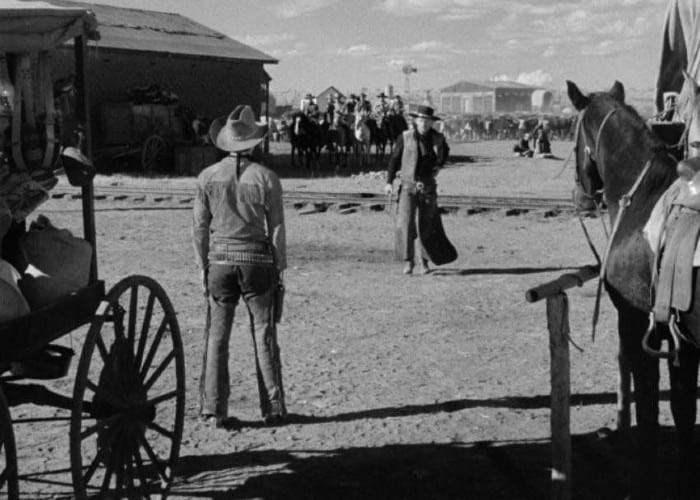
Favreau has stated that Howard Hawks’ Red River is one of his favorite films, and some of its ideas are present in Mandalorian.
The Western stars John Wayne as a tyrannical taskmaster of a cattle drive, whose awful behavior results in his son (Montgomery Clift) rebelling against him and taking over the operation. Obviously, this doesn’t sit too well with his old man, who wants to kill him for causing the mutiny.
The behavior of the eponymous character (Pedro Pascal) in The Mandalorian is similar to the upstart son’s in Red River. Both men essentially turn their backs on authoritative figures for the greater good, which ultimately puts their lives in danger.
Keeping up with the Wayne connections, here’s a fun fact: the legendary actor’s grandson served as Pascal’s stunt double in some episodes of the show.
3 Godfathers (1948)
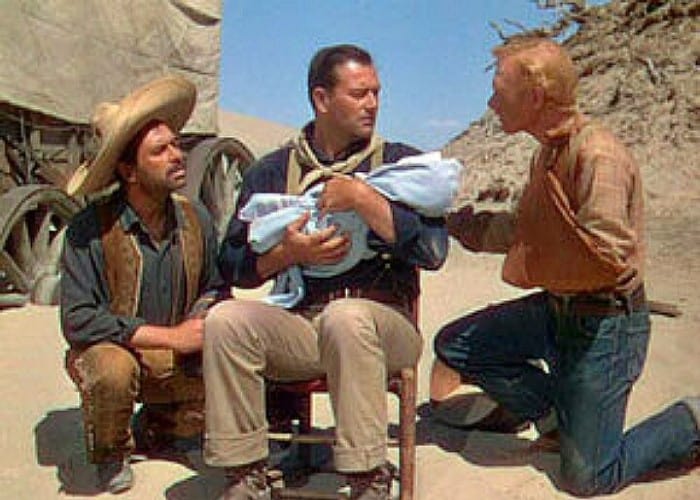
The desert planes in The Mandalorian are reminiscent of the sweeping vistas that are commonplace in John Ford’s classic Westerns, and some of the cinematography echoes The Searchers. However, there is another Ford film that Favreau clearly had in mind when he came up with the Star Wars show.
Also starring John Wayne, 3 Godfathers follows a trio of hunted outlaws who are unwittingly tasked with returning a baby to civilization after the child’s mother passes away. When we meet the robbers, they’re prone to engaging in some shady business to make a profit, but when they discover the child, their inner good guys are revealed — just like the Mando character after saving Baby Yoda from a Stormtrooper base.
3 Godfathers is based on the 1913 novella of the same name by Peter B. Kyne. This is the third adaptation of the story, and the second to be helmed by Ford following his 1919 silent film Marked Men.
Seven Samurai (1954) and The Magnificent Seven (1960)
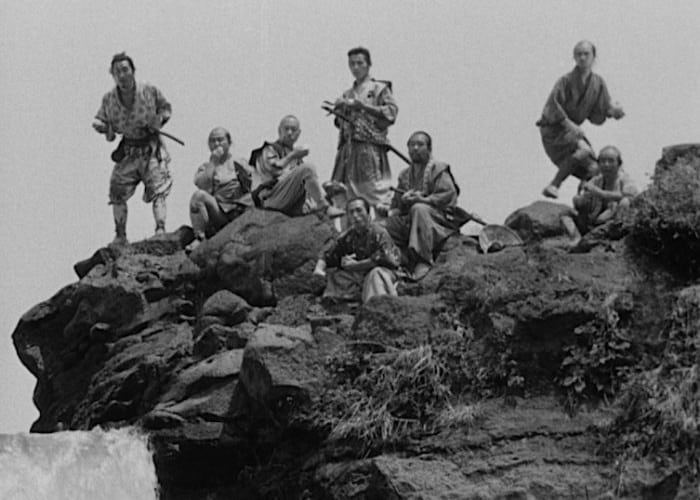
The original Star Wars movies drew heavily from the work of Akira Kurosawa, with The Hidden Fortress being a particularly huge influence on George Lucas. Favreau wanted to return to the aesthetic of the franchise’s roots with his show, so it’s unsurprising to learn that the Japanese auteur’s films also informed his storytelling in The Mandalorian.
Seven Samurai follows a band of heroes who are assembled one by one to participate in an against-all-odds mission, which requires them to defend a small village from a large group of bandits. The Mandalorian more or less recreated the movie in its fourth episode, “Chapter 4: Sanctuary,” as our bounty hunter teams up with former Rebel Alliance soldier Cara Dune (Gina Carano) to save a farm village from raiders.
By extension, The Magnificent Seven is another likely influence on The Mandalorian. The movie takes Seven Samurai’s story and applies it to the Old West, as a group of experienced gunslingers team up to protect a Mexican town from a bandit posse.
For a campy space-themed take on the idea, Battle Beyond the Stars is also worth checking out. The Roger Corman movie was made to cash in on the Star Wars craze of the early 1980s, but the flick owes more to Kurosawa than Lucas.
The Big Country (1958)
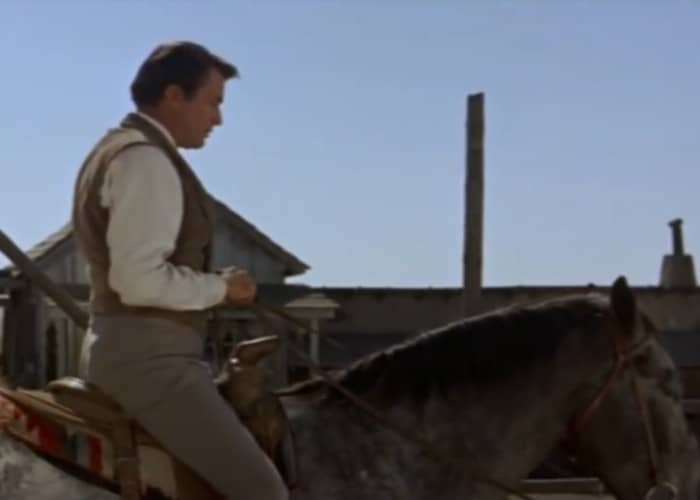
No one involved in the creation of The Mandalorian has mentioned this movie as being a direct influence on the show, but there is a scene in the first episode, simply titled “Chapter 1,” that appears to pay homage to William Wyler’s 1958 Western.
During the episode, the bounty hunter travels to the desert planet Arvala-7 and meets a native named Kuiil (voiced by Nick Nolte), who teaches him how to ride a Blurrg. Before Mando learns how to tame the beast, however, he gets tossed off and falls to the sand below. In The Big Country, Gregory Peck’s character is taught how to ride a horse by an experienced rancher, but not before the noble steed sends him flying into the hay.
There have been many Westerns featuring cowboys falling off their horses, but the brief moment in The Mandalorian heavily resembles The Big Country.
The Tale of Zatoichi (1962)
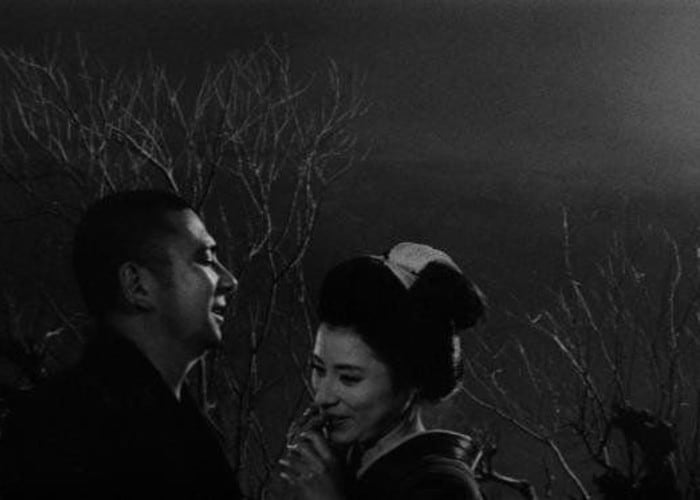
When it comes to entertainment about conflicted nomads, look no further than the Zatoichi saga. Over the course of 26 original films, a brief television series, and a 2003 remake, the blind swordsman has conned and battled his way through a variety of troublesome situations. Along the way, he has righted a number of wrongdoers and committed a few wrongs of his own.
Zatoichi isn’t a clear-cut hero. He’s an outlaw samurai forced into criminal life to get by. He’d rather be a masseur, but despite being reluctant to draw his sword, he spends more time mingling with bad people. Still, work is work at the end of the day, and sometimes that means getting your hands dirty.
In the series’ first entry, The Tale of Zatoichi, he accepts an assignment to eliminate a rival samurai. However, Zatoichi and his opponent become friends, which makes their inevitable showdown all the more upsetting. Both warriors follow a similar code of honor, but they just so happen to be employed by rival gangs.
Furthermore, Zatoichi’s morals aren’t too dissimilar to Mando’s. The galactic bounty hunter has mingled with the dark side through necessity in the past. But overall, he’s a good person when push comes to shove.
The Man With No Name Trilogy (1964 – 1966)

These movies are the most obvious influence on the Disney+ series. According to Favreau, the Mando character is “a deconstructed version of Clint Eastwood in The Man with No Name [trilogy],” and Pascal is clearly channeling the mysterious gunslinger character through his laconic speech, dry sense of humor, and shooting abilities.
Favreau believes that Eastwood’s poncho-clad loner is a fun character through which to see Sergio Leone’s Spaghetti Western world, and he wanted to achieve a similar effect with Mando in the Star Wars universe.
The trilogy sees the character adopt a number of roles and become entwined in many deadly situations. In A Fistful of Dollars — an unofficial remake of Yojimbo — he wanders into a town and uses cunning methods to pit its two rival factions against each other. In For a Few Dollars More, he teams up with a bounty hunter to track down a fleeing outlaw. Finally, in The Good, and the Bad, the Ugly, he hunts some gold.
Leone never meant for the three films to become a trilogy, but they were marketed as such by American distributors. That said, the movies do feel connected because they revolve around a loner cowboy trying to survive in the harsh reality of the Wild West.
While The Mandalorian does have an overarching storyline, part of its appeal is its randomness. Each new episode is about Mando ending up in an unexpected situation in some new corner of The Outer Rim. Like The Man with No Name before him, Mando is a nomad whose adventures are quite episodic.
The Wild Bunch (1969)
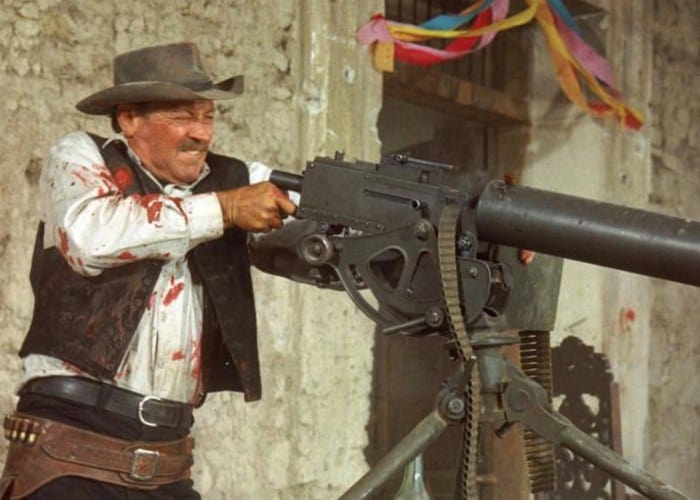
The first episode of The Mandalorian sees its titular hero venture into a small town that’s populated with a small army of enemies, all of whom stand in the way of him completing his mission. The fight is on.
With the odds stacked against him, the bounty hunter uses a laser cannon to take out his opponents. The scene is a fun call-back to the Battle of Bloody Porch in The Wild Bunch — everything from the action to the town setting is similar to the showdown in Sam Peckinpah’s revisionist masterpiece.
During this episode, Mando also still operates in a moral grey zone, willing to do dirty jobs for Imperial henchmen. Peckinpah’s movie similarly revolves around some questionable characters, but his outlaws aren’t quite as redeemable as Disney’s galactic bounty hunter.
Yojimbo (1961) and Sanjuro (1963)

Yojimbo tells the story of a wandering warrior (Toshiro Mifune) who enters a small village and pits two criminal factions against each other in order to free its people. The nameless ronin in Yojimbo is essentially the Mandalorian’s feudal Japanese ancestor, as both warriors are adventurers who are shrouded in mystery and prone to conflict.
Pascal has revealed that Favreau told him to familiarize himself with Yojimbo prior to making the show, and the film is an obvious influence. However, if you’re going to watch Yojimbo, then its companion sequel, Sanjuro, is also essential viewing for a funnier take on a similar concept.
In Sanjuro, the titular samurai gets caught up in a political scheme that revolves around corruption within a clan. As a result, he must teach some budding warriors how to fight, or else they’ll face eradication at the hands of a corrupt despot. Plenty of laughs and action-packed thrills ensue.
The Mandalorian isn’t without humor, and the funny side of Kurosawa likely informed the more humorous parts of Favreau’s show.
Lone Wolf and Cub: Sword of Vengeance (1972)
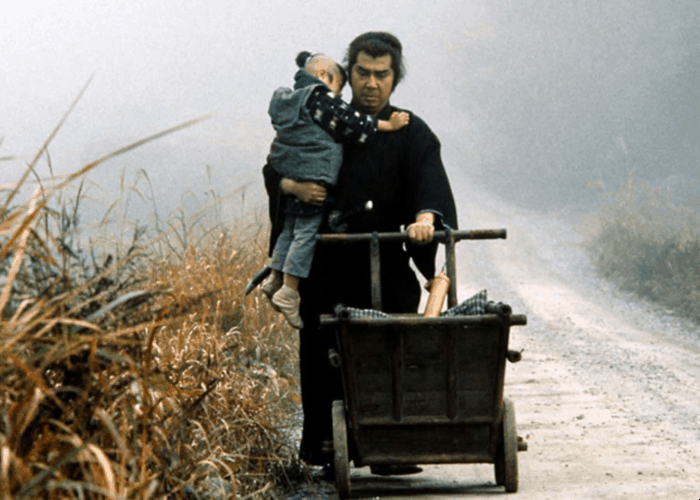
The central premise of The Mandalorian — a bounty hunter roaming the lands with a child in a cart, set against the backdrop of a corrupt empire’s rule — is a riff on this 1972 chambara film from director Kenji Misumi.
Released as Shogun Assassin in the United States, Lone Wolf and Cub: Sword of Vengeance follows a rogue samurai who travels around Edo Japan with his three-year-old son, getting into several conflicts along the way. The Mandalorian is similar in the sense that each episode presents a new adventure for the bounty hunter and Baby Yoda as they navigate dangerous terrains.
Lone Wolf and Cub is based on a 28 volume manga series by writer Kazuo Koike and artist Goseki Kojima, and the film employs the source material’s sensibilities. The violence is over-the-top, with blood spraying from decapitated heads and dismembered limbs, but there is some heartfelt drama thrown in for good measure.
The film spawned five sequels, all of which are worth watching if you like your action bloody and stylish. The Mandalorian is obviously much tamer than the Lone Wolf and Cub films, but the conceptual similarities are evident.
Pat Garrett and Billy the Kid (1973)

The relationship between Mando and Greef Karga (Carl Weathers) is rooted in both rivalry and cooperation. When we are first introduced to the pair, Karga helps the bounty hunter find work. However, when Mando goes rogue after saving Baby Yoda, the pair become enemies — but not to the extent that their rivalry becomes personal. It’s just business.
In Old West lore, Pat Garrett and Billy the Kid were also frenemies, and Peckinpah’s film about the pair acknowledges this element of their relationship. When the former (James Corburn) becomes a lawman, he must bring his outlaw buddy (Kris Kristofferson) to justice, even though both men are relics of a bygone era who empathize with each other.
Peckinpah’s movie also takes place during a period when the outlaws and gunslingers of yesteryear were becoming obsolete. In The Mandalorian, the galaxy is also heading toward the rise of the First Order, and Mando and Karga are just two guys trying to find their place in a changing world.
The post The Western and Samurai Influences of ‘The Mandalorian’ appeared first on Film School Rejects.
0 comments:
Post a Comment